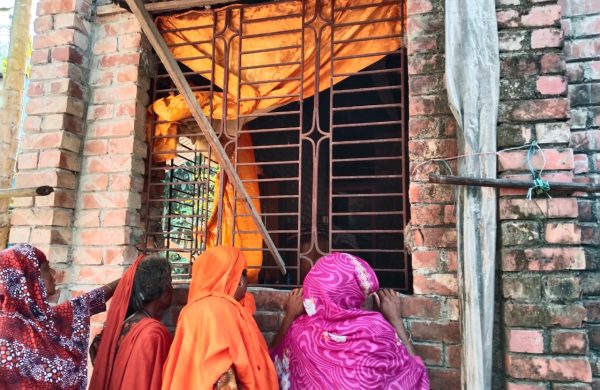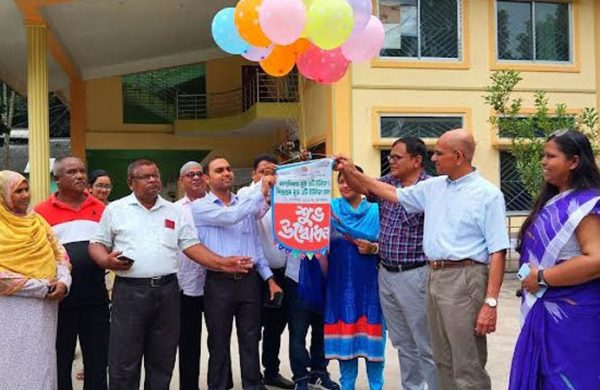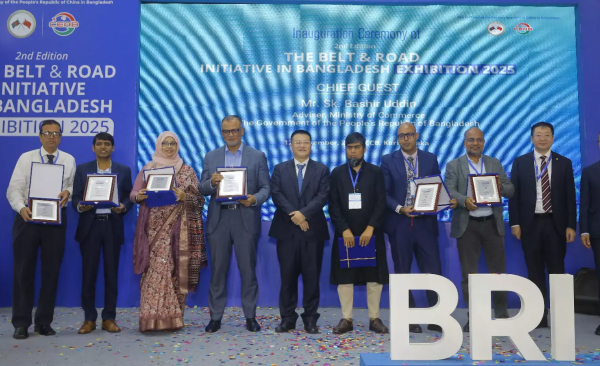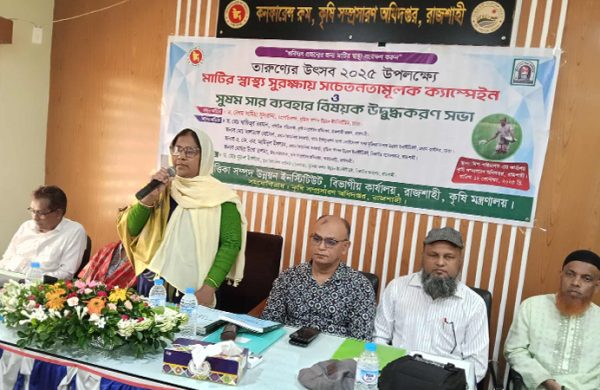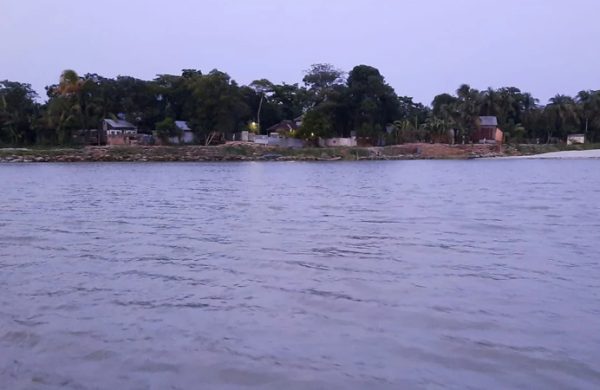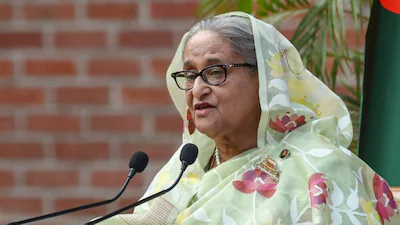Is our RMG industry bracing for upcoming US tariffs?
- Update Time : Thursday, July 24, 2025
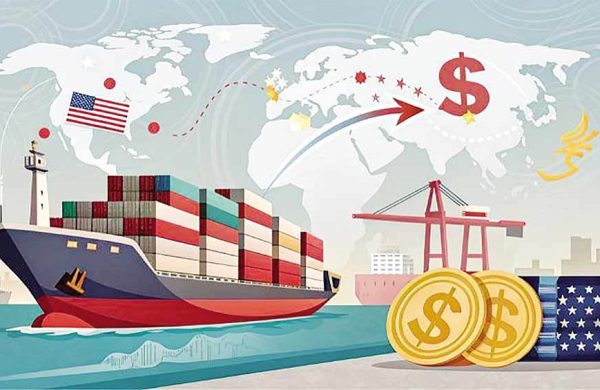
—Md Abu Saim—
Bangladesh’s vital garment industry is bracing for significant disruption as the United States is implementing a new 35 percent reciprocal tariff effective August 1, bringing the total tariff burden to approximately 50 percent when combined with existing duties. Industry leaders, economic analysts, and government officials are scrambling to develop strategies to mitigate what many describe as an existential threat to the nation’s largest export sector and employer of millions.
The current crisis began on April 2 when US President Donald Trump announced retaliatory tariffs on 60 countries, including Bangladesh, as part of his “America First” trade policy. Following diplomatic outreach from Bangladesh on April 7 requesting suspension, the Trump administration temporarily paused the decision for three months on April 9, maintaining only a minimum 10 percent duty.
However, hopes for a permanent resolution were dashed on July 8 when the administration announced the 35 percent reciprocal tariff on all Bangladeshi goods, set to take effect August 1. With tariffs totaling 50 percent, Bangladeshi garments risk being priced out of their most important market. The industry leader surged policymakers and trade negotiators to take immediate, coordinated steps to secure tariff relief and protect the future of Bangladesh’s garment industry.
The United States represents Bangladesh’s single largest export destination, with total exports reaching $8.4 billion last year. The garment sector accounted for $7.34 billion of this figure, highlighting the industry’s critical importance to the Bangladeshi economy.
Economic experts warn that the tariff increase could trigger a cascade of negative consequences. “Doing business, particularly in exports, under such a high tariff regime will be extremely challenging for Bangladesh”, said CPD Executive Director Fahmida Khatun.
If Bangladesh faces higher tariff rates than competitors like India, Indonesia, and Vietnam, it could create a serious competitive disadvantage. As production costs rise and profit margins shrink due to the tariff, many garment factories may be forced to scale back operations or shut down entirely.
Early signs of disruption are already emerging, with reports that major retailers including Walmart have put garment orders from Bangladesh on hold in anticipation of the tariff implementation. Industry insiders fear this could be the beginning of a broader shift as brands seek alternative sourcing destinations with lower tariff burdens.
Besides, it would be tough for Bangladesh to meet the US demand for meeting ‘rules of origin’, which the US wants at 40%, due to heavy reliance on imports for backward linkage. In the present setting, Bangladesh would be able to meet hardly 30%.
The garment industry employs approximately 4 million workers in Bangladesh, the vast majority of whom are women from rural areas. These workers and their families could face severe economic hardship if factories close or reduce operations.
Labor organizations across Asia have raised alarms about the disproportionate impact on female workers, who often support extended families on their wages. In neighboring Cambodia, which faces a similar tariff situation, union representatives have expressed concern that “the potential loss of jobs will cut the income and ability for workers to sustain their daily lives.”
For Bangladesh, where the garment industry has been instrumental in reducing poverty and providing economic opportunities for women, widespread job losses could reverse decades of socioeconomic progress.
Despite a three-month negotiation window since April, Bangladesh only marginally reduced its own tariffs by 2%, a move that was symbolic and ineffective. Trade economist Zahid Hussain criticized the government’s passive approach, especially when compared to countries like Vietnam, South Africa, and Indonesia, which actively negotiated better outcomes. For instance, Vietnam secured a 20% flat rate after significantly lowering its own trade barriers. Bangladesh now ranks among the worst-affected of the 14 targeted countries, ahead of only four nations with higher or equal tariff burdens.
Business leaders are alarmed, with Mohiuddin Rubel, former director of BGMEA warning that the tariffs could severely impact the U.S.-bound garment trade, supporting hundreds of thousands of jobs. With the U.S. being Bangladesh’s largest single export market, the economic consequences could be devastating.
Facing challenging environment, Bangladesh must pursue both short-term mitigation strategies and longer-term structural improvements to maintain the viability of its garment sector. Several approaches warrant consideration:
Bangladesh once faltered by neglecting timely and strategic economic diplomacy-an oversight that contributed to its current tariff vulnerability. That mistake must not be repeated. It is now imperative to intensify direct diplomatic engagement with the U.S. administration. Offering measured concessions, such as enhanced market access for select U.S. products or addressing specific trade concerns, could open the door to meaningful negotiations. Vietnam’s success in securing a lower tariff rate stands as clear evidence that proactive, well-timed diplomacy works. Bangladesh must now reclaim that path with urgency and determination.
U.S. importers and consumers increasingly value ethical production and sustainability. By enhancing the country’s reputation as a top-notch sustainable producer-with strong workplace safety, environmental standards, and compliance mechanisms-Bangladesh could differentiate its products and potentially command premium pricing that helps absorb tariff costs.
Bangladesh currently imports much of its fabric, creating additional costs and supply chain vulnerabilities. Developing a more robust domestic textile industry with proper incentives could reduce production costs and create additional value within the country.
Bangladesh could seek to join or establish regional trade agreements that enhance its competitiveness and potentially provide alternative pathways to the US market through countries with more favorable tariff arrangements.
The current crisis, while presenting serious challenges, also creates an opportunity for Bangladesh to address structural weaknesses in its garment sector and emerge with a more resilient, diversified, and higher-value industry. With strategic vision and collaborative effort from government, industry, and international partners, Bangladesh’s garment sector can navigate these troubled waters and maintain its position as a global manufacturing leader.
For now, all eyes are on the approaching August 1 deadline, with industry leaders hoping for a last-minute breakthrough that could avert the full impact of the tariffs and provide breathing room for the longer-term transformations that will ultimately determine the industry’s fate.
————————————————————————
The writer is a Former Student of International Relations at Dhaka University








